A ball of mass in collides horizontally with a stationary wedge on a rough horizontal surface, in the two orientations as shown. Neglect friction between the ball and the wedge. The students comment on the system of ball and wedge in these situations
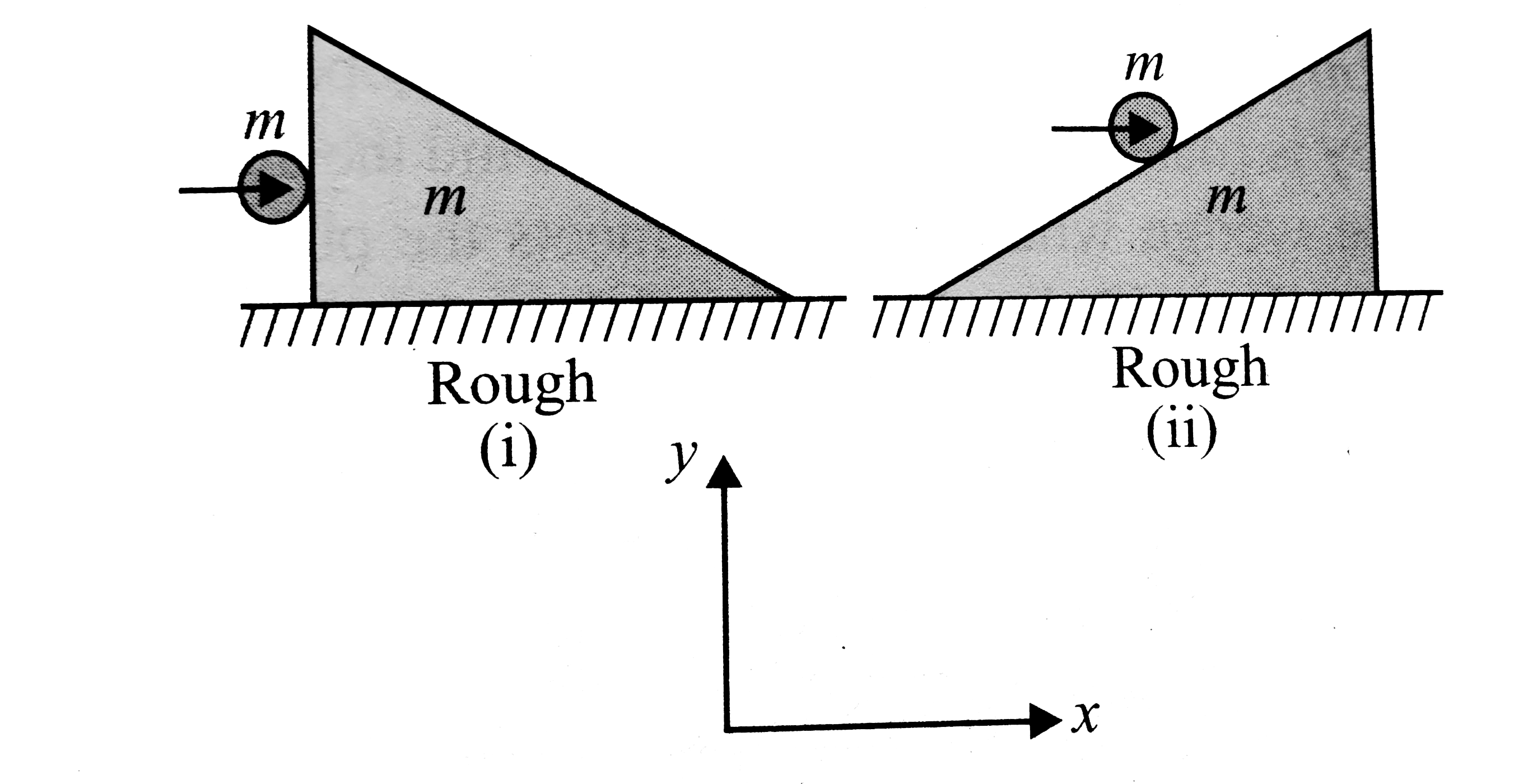 Saurav: Momentum of the system in x-direction will change by significant amount in both the cases. Rahul: There are no impulsive external forces in x-direction in both cases, hence the total momentum of the system in x-direction can be treated as conserved in both cases.
Saurav: Momentum of the system in x-direction will change by significant amount in both the cases. Rahul: There are no impulsive external forces in x-direction in both cases, hence the total momentum of the system in x-direction can be treated as conserved in both cases.
Saurav is incorrect and Rahul is correct
Saurav is correct and Rahul is incorrect
Both are correct
Both are incorrect
The correct Answer is:D
In case I there is no horizontal, external impulse on the ball and mass system while in case II friction is impulseive as normal with ground is impulsive. Hence, both statements are incorrect.
Topper's Solved these Questions
- CENTRE OF MASSBook:CENGAGE PHYSICS ENGLISHChapter:CENTRE OF MASSExercise:Multiple Correct
Explore 25 Videos
- CENTRE OF MASSBook:CENGAGE PHYSICS ENGLISHChapter:CENTRE OF MASSExercise:Assertion - Reasoning
Explore 2 Videos
- CENTRE OF MASSBook:CENGAGE PHYSICS ENGLISHChapter:CENTRE OF MASSExercise:Subjective
Explore 23 Videos
- CALORIMETRYBook:CENGAGE PHYSICS ENGLISHChapter:CALORIMETRYExercise:Solved Example
Explore 13 Videos
- DIMENSIONS & MEASUREMENTBook:CENGAGE PHYSICS ENGLISHChapter:DIMENSIONS & MEASUREMENTExercise:Integer
Explore 2 Videos
Similar Questions
A ball strikes a smooth horizontal floor obliquely and rebounds inelastically.
View SolutionStatement I: In a two-body collision, the momenta of the particles are equal and opposite to one another, before as well as after the collision when measured in the centre of mass frame.
Statement. II: The momentum of the system is zero from the centre of mass frame.
View SolutionTwo identical smooth balls are projected from points O and A on the horizontal ground with same speed of projection. The angle of projection in each case is 30∘.The distance between O and A is 100m. The balls collide in mid-air and return to their respective points of projection. If the coefficient of restitution is 0.7, find the speed of projection of either ball (in m/s) correct to nearest integer. (Take g=10ms−2 and √3=1.7)
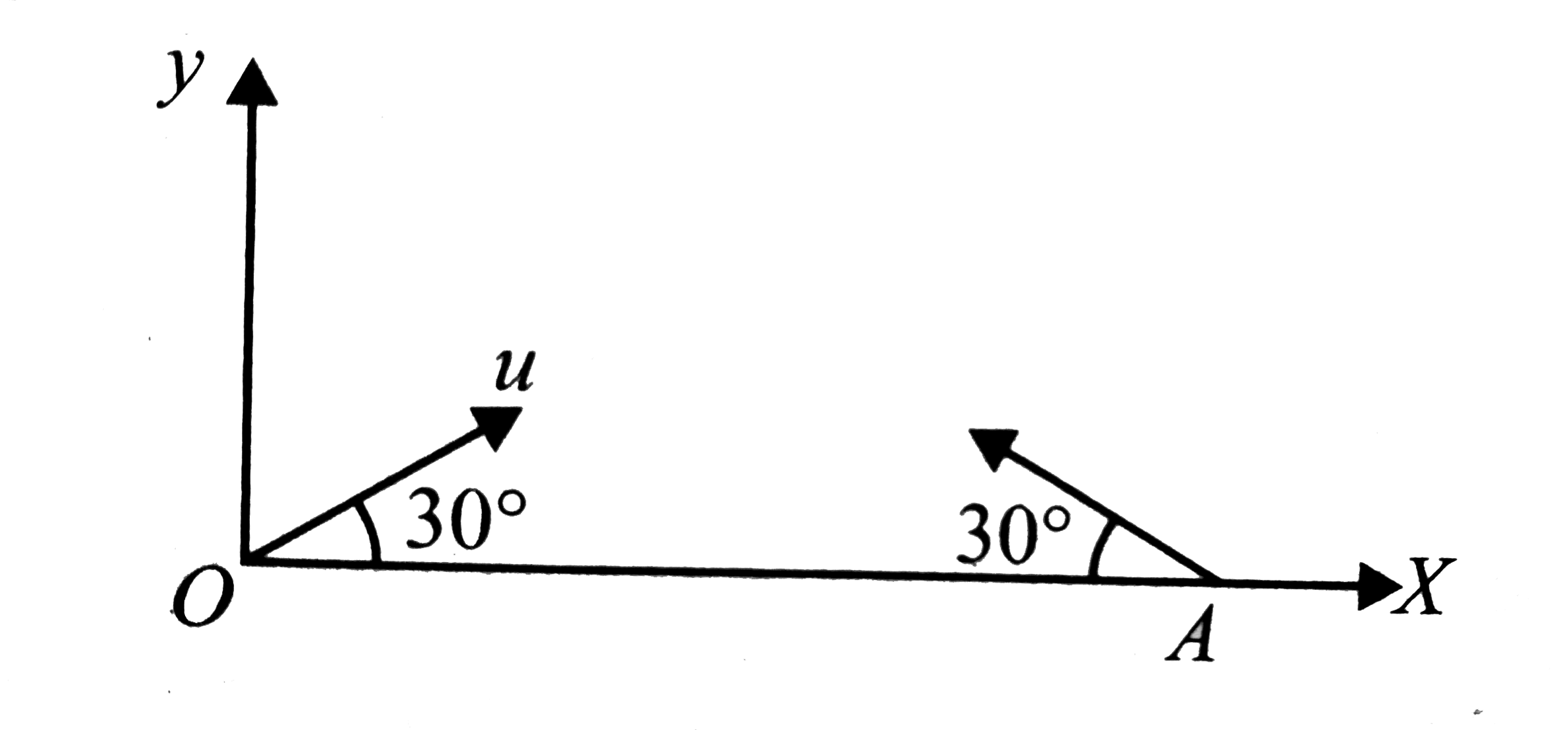
View SolutionA colorimeter contains 400g of water at a temperature of 5∘C. Then, 200g of water at a temperature of +10∘C and 400g of ice at a temperature of −60∘C are added. What is the final temperature of the contents of calorimeter?
Specific heat capacity of water −1000 cal/kg/K
Specific latent heat of fusion of ice =80×1000 cal/kg
Relative specific heat of ice =0.5
View SolutionTo find the distance d over which a signal can be seen clearly in foggy conditions, a railways-engineer uses dimensions and assumes that the distance depends on the mass density ρ of the fog, intensity (power/area) S of the light from the signal and its frequency f. the engineer finds that d is proportional to S1/n. the value of n is
View SolutionA ball of mass m moving horizotally which velocity u hits a wedge of mass M. The wedge is situated on a smooth horizontal source. If after striking with wedge the ball starts moving in vertical direction and the wedge starts moving in horizotal plane. calculate
a. the velocity of wedge V.
b. the velocity (v) at which the ball moves in vertical direction.
c. the impulse imparted by the ball on the wedge.
d. the coefficient of restitution e=?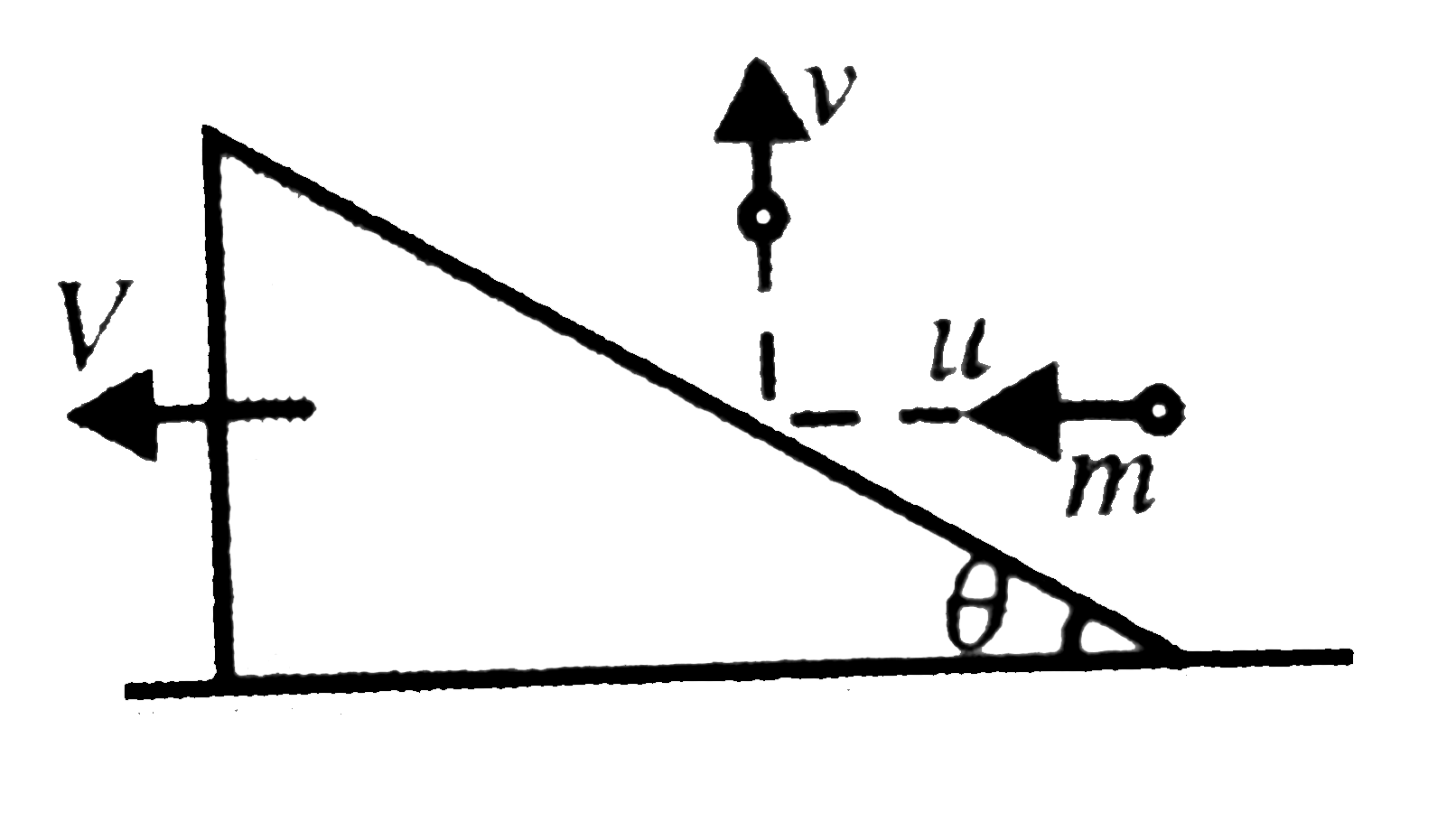
View SolutionA ball of mass in collides horizontally with a stationary wedge on a rough horizontal surface, in the two orientations as shown. Neglect friction between the ball and the wedge. The students comment on the system of ball and wedge in these situations Saurav: Momentum of the system in x -direction will change by significant amount in both the cases. Rahul: There are no impulsive external forces in x -direction in both cases, hence the total momentum of the system in x -direction can be treated as conserved in both cases.
View SolutionIn the given the wedge is acted upon by a constant horizontal force 'F'. The wedge is moving on a smooth horizontal surface A ball of mas 'm' is at rest relative to the wedge The ratio of forces exerted on 'm' by the wedge when 'F' is acting and 'F' is withdrawn assuming no friction between the edge and the ball is equal to .
View SolutionA ball of mass m collides horizontally with a stationary wedge on a rough horizontal surface, in the two orientations as shown. Neglect friction between ball and wedge. Two student comment on system of ball and wedge in thses situations
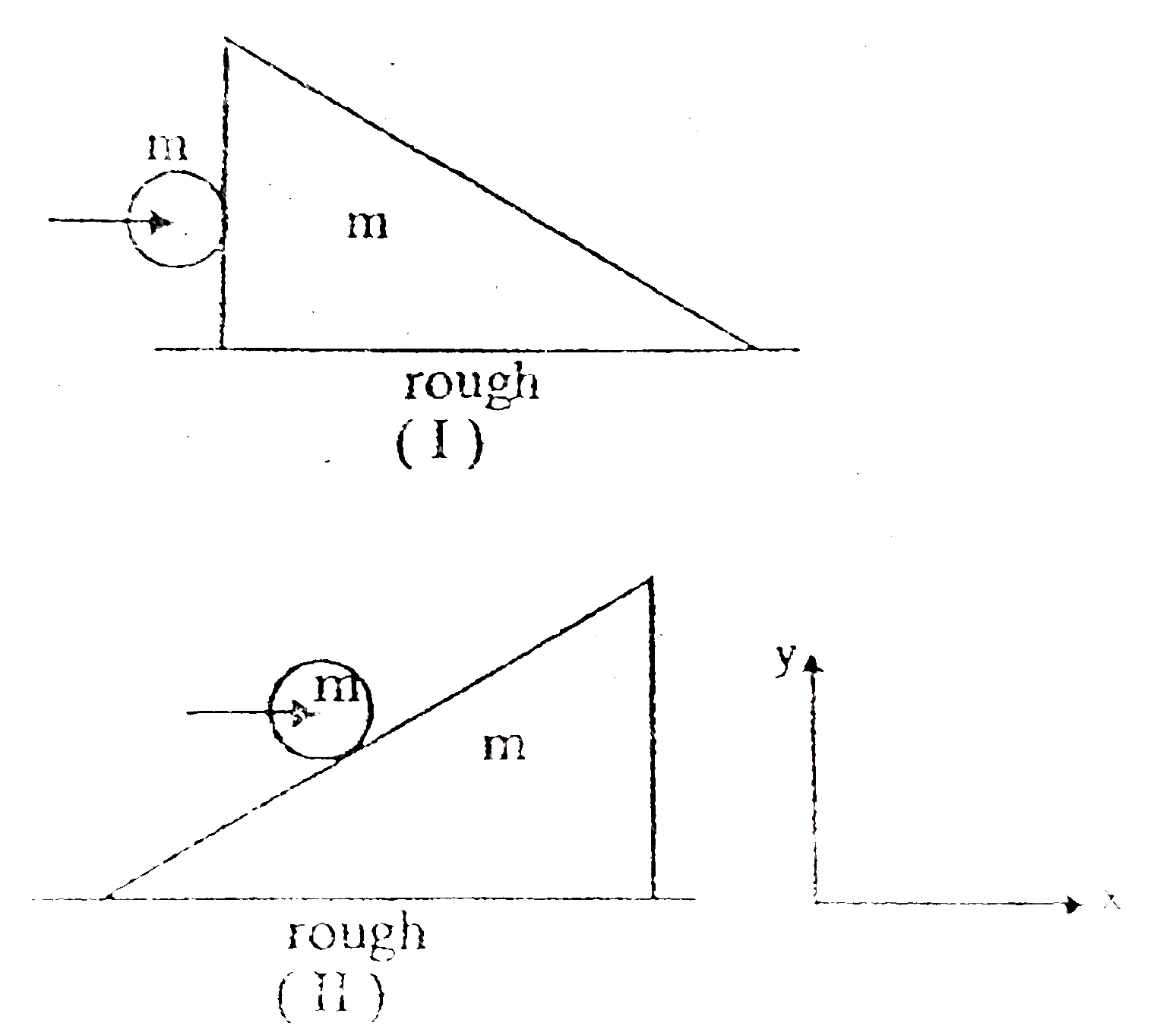
Saurav : Momentum of system in x−direction will change by significant amout in both cases. Rahul : There are no impulsive external forces ijn y−directions in both cases hence the total momentum of system in y-directions can be treated as conserved in both cases .
View SolutionA wedge mass m rest on horizontal surface. The inclination of the wedge is α. A ball of mass m moving horizontal with speed u hits the inclined face of the wedge in elastically and after hitting slides up the inclined face of the wedge. Find the velocity of the wedge just after collision. Neglect any friction.
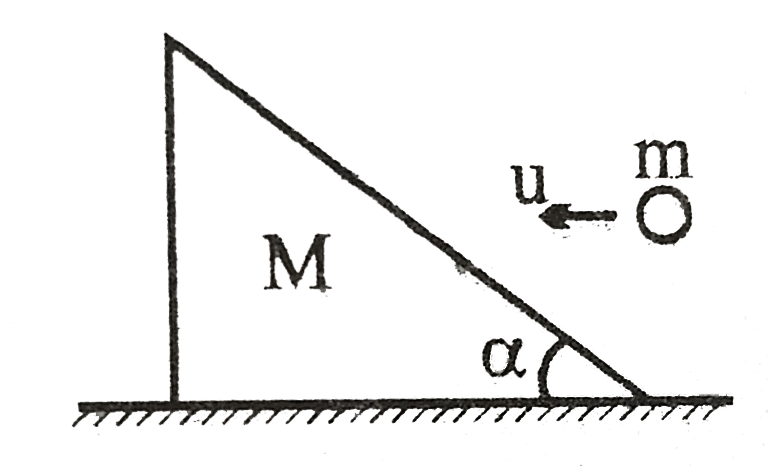
View SolutionA ball of mass m collides horizontally with a stationary wedge on a rough horizontal surface, in the two orientations as shown. Neglect friction between ball and wedge. Two student comment on system of ball and wedge in these situation

Saurav: Momentum of system in x-direction will change by significant amount in both cases.
Rahul : There are no impulsive external forces in y-direction in both cases hence the total momentum of system in y-direction can be treated as conserved in both cases.
View SolutionA ball of mass m moving vertically down , collides with inclined surface of the wedge . After the collision , wedge starts moving in horizontal direction with velocity v0 . If all the surfaces are smooth then impulse applied by wedge on the ball during collision is given by
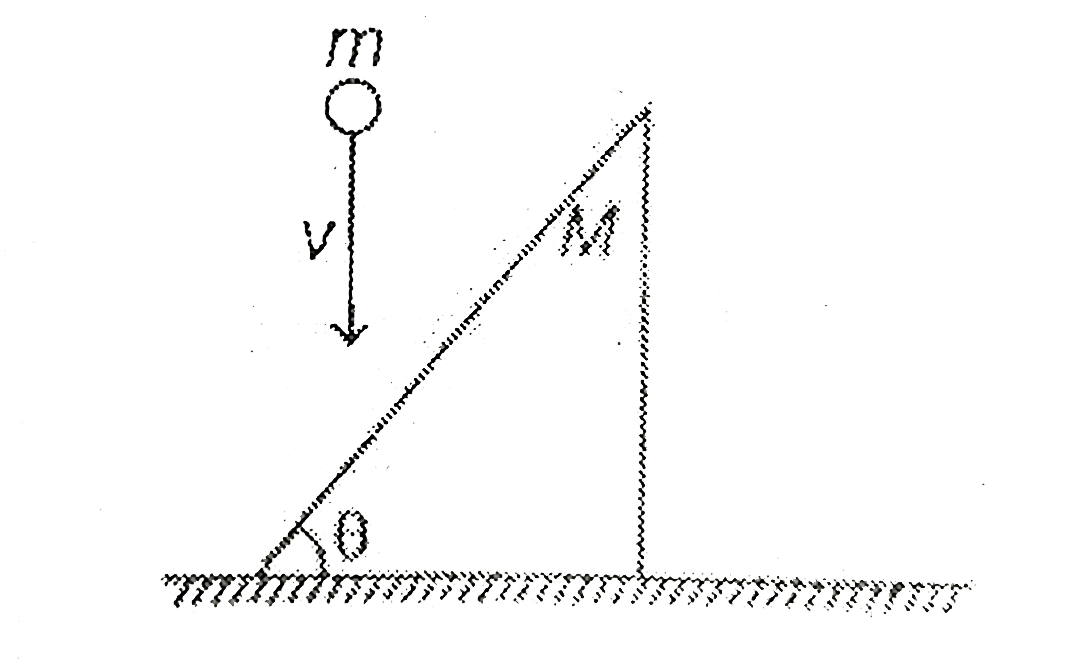
View SolutionThe system shown is released from rest. Mass of ball is m kg and that of wedge is M kg respectively. When ball reaches at highest point on other side of the wedge, velocity of ball and wedge is (initially wedge is kept at rest against a wall and there is no friction anywhere) :
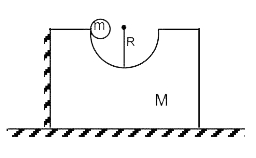
View SolutionA wedge of mass M resting on a horizontal frictionless surface is acted upon by a force F in the horizontal direction as shown in figure. Find the net horizontal force acting on the shaded portion of the wedge.
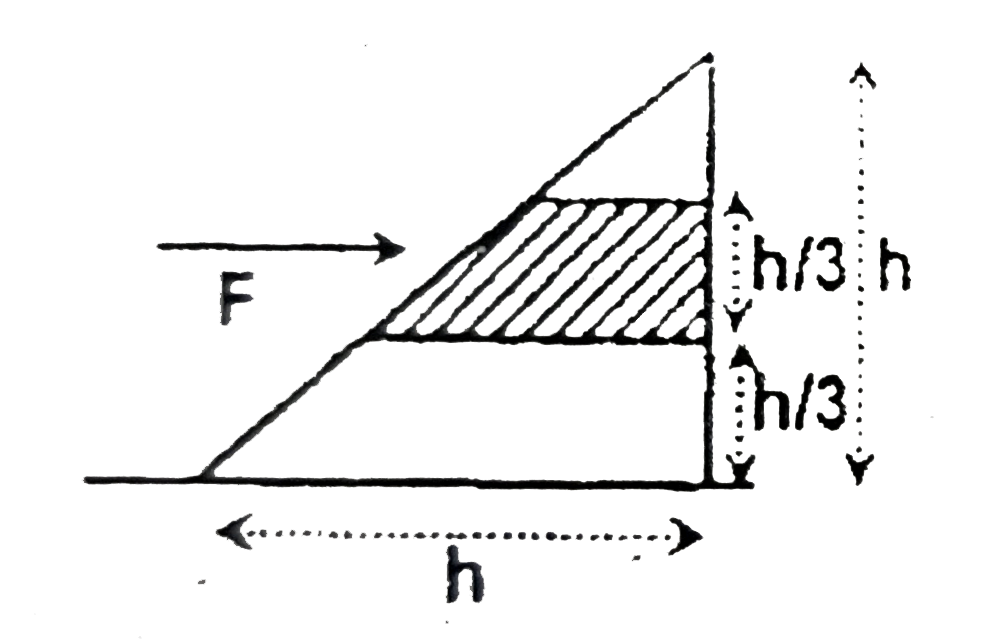
View SolutionIn the given figure, the wedge is acted upon by a constant horizontal force F. The wedge is moving on a smooth horizontal surface. A ball of mass 'm' is at rest relative to the wedge. The ratio of forces exerted on 'm' by the wedge when F is acting, and when F is withdrawn, assuming no friction between the wedge and the ball, the ratio is equal to
View Solution

